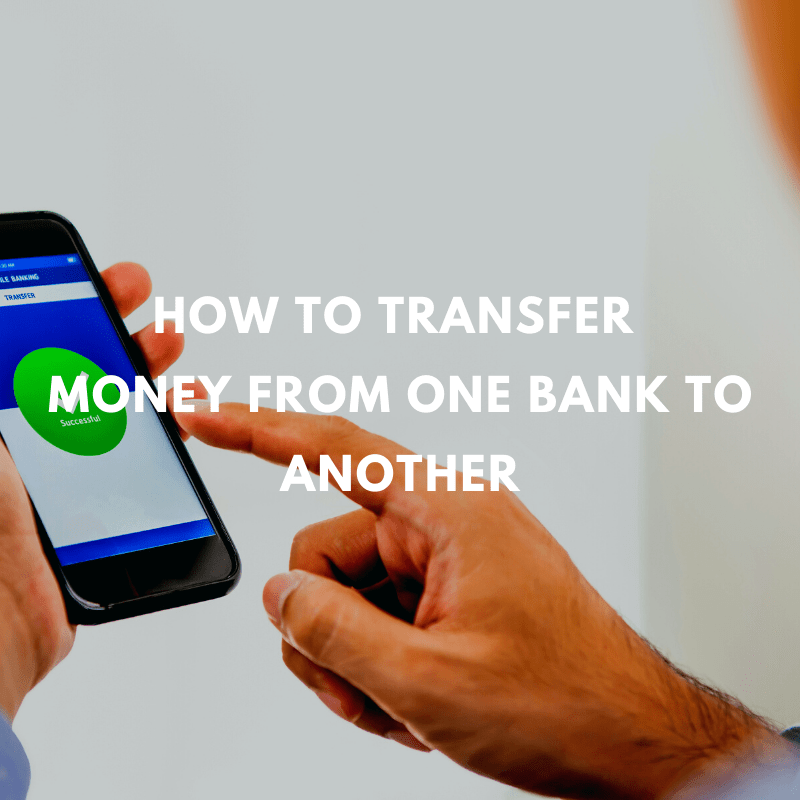Banks have some of the tightest security around. Even so, no system is 100% foolproof, and sometimes a bank account gets hacked. While you understandably might be alarmed and worried, there are things you should know and do straight away.
In all likelihood, you weren’t the target of the attackers – your account just happened to be at the wrong place at the wrong time. Most attacks are made en masse, shooting in the dark then seeing what comes out. Of course, hacks come in different shapes and sizes, and targeted attacks are also possible.
What To Do if Your Bank Account is Hacked:
If your account has been hacked or you suspect some form of fraudulent activity, there are a few things that you need to do straight away. One of the most important things is to move fast.
The faster you move, the less your overall liabilities are going to be. Let’s jump straight into it.
Step 1: Freeze your card or account
The first thing you need to do is freeze your card or account straight away to avoid further potential losses.
Most banks and credit unions allow you to do this through your mobile banking or internet banking so that it can be done at any time, day or night.
In most cases, this should be nothing more than clicking a button with the exact location and procedure varying from one bank and app to the next. If you do not know whether your account has this functionality or forgot, refer to the app’s documentation.
Step 2: Identify suspicious activity
Now that you have frozen your account, no money can come in or go out. As such, we now need to move fast to avoid any incoming payments getting delayed.
In this step of the process, you need to identify the suspicious activity linked to your account.
Suspicious activities can take on many forms, including:
- Money is missing from your account
- You see transactions that you do not recognize
- You receive an alert from your bank that money was withdrawn
- You receive a call or message asking you for banking information or your SSN (Social Security Number)
While not all these activities mean your account was hacked, any of them should raise alarm bells.
You can use your bank statements, mobile banking app, or internet banking to detect these activities. Take a note of those activities that stand out and proceed to step 3.
It is essential to do this straight away and avoid putting it off. Even though your card is frozen, the more you wait, the more your liability increases.
Get it sorted and out of the way immediately to ensure you’re covered as much as possible.
Step 3: Contact the bank
Now it’s time to contact the bank. Bigger banks might have a dedicated phone number for reporting fraudulent activity.
On the other hand, smaller regional banks might have just one customer service number.
Either way, the operator should be able to direct your call to the right person with ease. Refer to your bank’s contact us web page for the relevant contact details.
The critical thing to know here is that your maximum liability will be lower the sooner you report theft. Federal law dictates what your maximum liability can be depending on the timeframes involved.
As a general rule, use the below table:
| Report by | Your maximum liability |
| Before any money is taken out | $0 |
| Within two business days of noticing fraudulent activity | $50 |
| Less than 60 days from receiving the bank statement but more than two days of noticing fraudulent activity | $500 |
| More than 60 days after receiving the bank statement | Full amount |
The bank will help you with the exact steps you need to take, including canceling any debit cards and credit cards and ordering a new card.
Keep in mind that not all hacks are equal. If in doubt, speak to your bank’s fraud department. They should be able to direct you on the best steps to take moving forward.
Step #4: Submit a claim
Unless you have already done so, you will need to submit a claim for reimbursement of any money stolen from your account.
In most cases, you can do this directly with your bank that holds the account or card from which the hacker stole money.
As mentioned earlier, time is critical, so make sure you move fast. Since procedures might vary from one bank to the next, it is best to check on the bank’s website for the exact procedure or give them a call.
Step #5: Check your credit report
Bank account hacking incidents often go hand in hand with identity theft. In such cases, the hacker/fraudster may try to open bank accounts in your name.
Such activity can result in a hit on your credit score; however, you can take steps to limit the damage.
Start by placing a fraud alert on your credit files and also ask for credit reports to see if any fraudulent activity shows up. If it does, you’ll want to open a dispute on any fraudulent activity.
Step #6: Report identity theft
If you have been a victim of identity theft, you should file a report with the FTC.
The process is relatively straightforward and shouldn’t take more than a few minutes of your time.
How Do Bank Accounts Get Hacked?
Bank accounts can get hacked in several different ways.
It’s essential to understand how as it will allow you to minimize the overall risk of your account, reducing the possibility of your account getting hacked in the future.
Hackers can make their way into your account from two locations – either the bank’s end or yours.
Hacked on the Bank’s Side
There is not much you can do to make sure that the bank’s networks and servers are secure – this is the responsibility of the banks.
This type of hack can happen if the bank suffers a data breach, with hackers typically stealing money from many accounts in one go in such scenarios. In such cases, the FBI usually gets involved.
Hacked on Your Side
Your account can also get hacked from your end using either technology-based factors or human-based factors such as social engineering.
Technology-based factors can include malware or hacking of your machine through a known security hole. The following section will cover the different steps you can take to limit risk in this area.
Social engineering refers to an altogether different type of hacking. Social engineering attacks can include phishing attacks where scammers use emails, phone calls, and text messages to scam you.
How To Prevent a Hacked Bank Account
Getting hacked is by and large outside of your control. Even so, there is a lot that you can do on your end to minimize the risk.
Here are the best practices you can follow to make sure you stay safe while online.
Regularly update all of your software
Always make sure that you update all of your software, including any computers, laptops, and smartphones that you might have.
Updates are essential as they address security holes in the software that hackers might otherwise use to get access to your system or accounts.
Install security software
Software protection such as antivirus and firewall software can help you make sure that no harmful software has been installed on your devices.
Antivirus, in particular, needs to be updated regularly to ensure that it can recognize new viruses.
Use two-factor authentication wherever possible
With two-factor authentication, you need to enter your username and password and a unique code from your phone. A recent survey by Microsoft has shown that two-factor authentication can stop 99.99% of attacks.
Using this authentication method, a hacker would need to steal your phone and password – and that’s highly unlikely.
Change all of your passwords
It’s considered best practice to change all of your passwords every so often. Remember that your passwords are stored on servers that are outside of your control.
It’s not unheard of for those servers to get hacked and users’ passwords sold on the dark web. Use complex passwords and never use the same password twice.
A good password manager can help you make sure you do not forget any of those passwords. Strong passwords contain a healthy mix of upper and lower-case letters, numbers, and special characters. It is equally essential to avoid simulating actual words since many hacking tools can account for this.
If there is an option to enable security questions, make sure that you do.
Avoid using public Wi-Fi
While public Wi-Fis are convenient, they are not very safe. Data passing over public Wi-Fi is not secured, making it that much easier for someone with bad intentions to eavesdrop on your communications.
If you have no other option, make sure you use a VPN connection to ensure that all traffic going over the Wi-Fi network is encrypted.
Familiarize yourself with your bank’s security policy
The bank’s security policy will detail how you should go about reporting fraud and security incidents.
While such policies might not make for fascinating reading, they will enable you to act fast should the worst happen.
Always remain skeptical
Whether it’s downloading software from sketchy sources or sharing sensitive information, a healthy dose of skepticism can prove to be very helpful.
With cybercrime and bank fraud still on an upward trend, caution is warranted. Avoid clicking on links from emails and social media alike, and always be careful when using an ATM.
FAQs
Do you get your money back if your bank account is hacked?
Generally speaking, yes – you will get your money back. However, you need to report fraudulent charges and transactions straight away.
The longer you wait, the more your maximum liability goes up. You may not get anything back at all if you wait for longer than six months before reporting the hacking incident.
How do I know my bank account is hacked?
There are several ways to know if your bank account has been hacked. If your mobile banking app comes with alerts, make sure alerts are enabled. Review transaction alerts that are out of place and alert your bank immediately.
You can also use the mobile app or internet banking to review checking account and savings account transactions. When using the app, you do not have to wait for bank statements to become available since these are updated more frequently.
Again, report suspicious activity as soon as possible to avoid being held liable for any losses incurred.
Can someone hack into your bank account with just your account number?
Nobody can hack into your bank account with just your account number. To hack into your bank account, someone will need to either take down the bank’s defenses or hack into your computer and steal your credentials.
Hacking your account through the bank’s network would indicate professional cybercriminals. The bank’s insurance protects you in such cases.
On the other hand, if they hack your account through your computer, you’ll be glad to know that you’re still protected against losses.
To minimize the risk of getting hacked, refer to the How to prevent getting hacked section. Here, you can learn about all of the recommended best practices you can follow to stay safe when online.
Can online banking be hacked?
Online banking, including banking apps, can be hacked. To minimize risk, avoid using public Wi-Fis such as coffee shops and use a private internet connection instead.
You might also want to enable two-factor authentication if this is available. 2FA is known to stop 99.99% of attacks.
Does my Visa card have Visa Zero Liability?
If you have a Visa card, check whether this comes with Visa’s Zero Liability Policy. Through this policy, you will not be held liable for any losses that arise from unauthorized charges made to your account.
You should review monthly statements as soon as they become available and report any suspicious activity straight away to the issuing bank.
Any funds lost due to a lost or stolen card and fraudulent online and offline use of the card will be replaced by the issuer within five business days.
Stay Calm, Stay Alert
Nobody enjoys getting hacked. Your personal data might be exposed, and going through the hassle of securing your accounts and having to open new accounts is no fun.
Even so, we must recognize that the risk of getting hacked is real and comes part and parcel with a world where most things are done online.
That’s not to say that we are sitting ducks in all of this.
As the article above has shown us, there are steps that we can take to protect ourselves. Keep in mind that most attacks are not targeted at any one individual and cast a wide net in the hopes of a good catch.
The good news is that we can use this information to our advantage. A little bit of effort in securing our digital life goes a long way as hackers move towards easier targets.
As mentioned earlier, it’s essential to stay alert as this will help you catch any hacking incidents right in the bud. Equally, it is crucial to remain calm and take a methodological approach should the worst happen. Banks, as well as the law, offer you protection – especially if you move fast.





Comments are closed.
Comments are closed here.